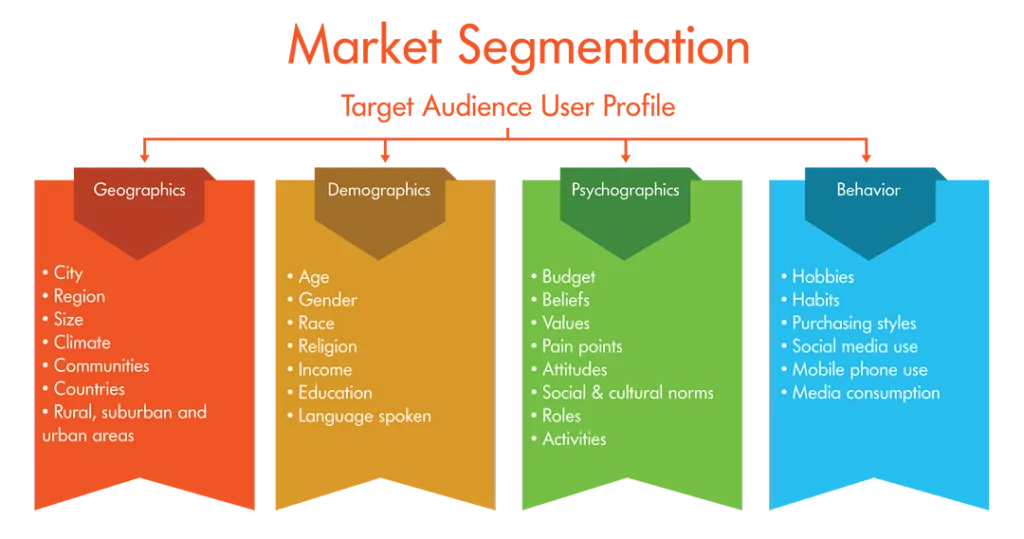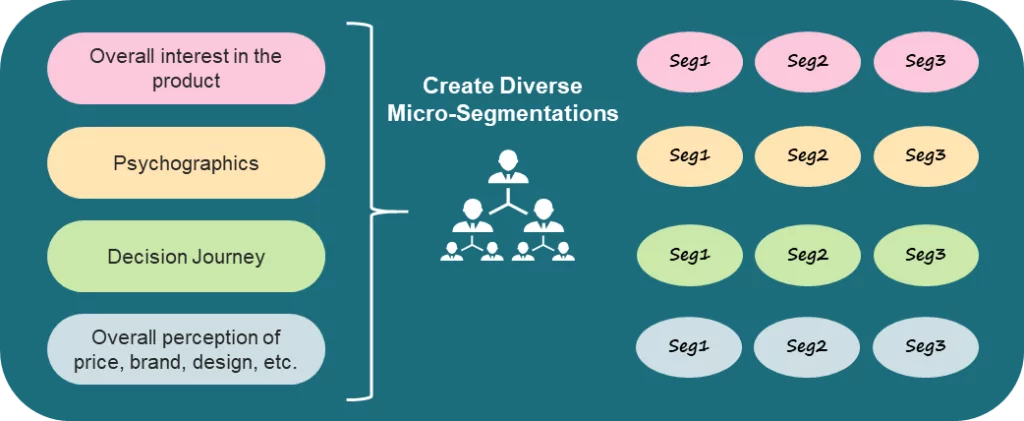Audience segmentation and targeting help your organization develop the most effective marketing strategies based on variables associated with your customer base.
Companies can increase their leads by 80% when using automation tools with data-driven insights, like audience segmentation features. Improve conversion, increase revenue, and advance brand awareness.
Seems easy enough, right? If not, don’t worry. Here’s what you need to know to get started.
Key Takeaways:
- Audience segmentation allows you to place leads into subgroups based on specific criteria. That enables you to select (target) the audience for your marketing campaign.
- There are four basic types of audience segmentation, including demographics, geographics, psychographics, and behavioral patterns.
- Once segmented, you can target specific subgroups with detailed offers. These insights will help you determine who would be your ideal customer.
- Your target market will change. Insights can help you target your audience for more effective marketing strategies in real-time.
What Is Audience Segmentation?
Audience segmentation is when brands place their contacts, leads, and customers into subgroups. By identifying each subgroup, you can develop more effective marketing strategies.
It allows you to maximize your ROI on every marketing dollar spent. Marketing to a large audience is cost-prohibitive. However, segmenting your audience into groups enables you to reach only those more likely to buy.
When performing audience segmentation, you should:
- Create detailed audience segments
- Set and measure sales goals
- Utilize multiple sales channels (email, social media, print media, etc.)
- Be adaptable and open to new tactics
Types of Target Audience Segmentation
There are four primary types of audience segmentation. These pockets of subgroups with varying interests have common characteristics specific to each group (as seen in the graph below).
Source: Taplink
Around 80% of audiences want to purchase from brands that personalize their experience. That means developing marketing strategies customized to meet that customer’s wants or needs.
For the best audience reach, you will need to break your subgroups into the following segments:
1. Demographic
This form of segmentation is the basis for all marketing segmentation. When used in terms of reaching target audiences, demographical segmentation includes:
- Age
- Gender
- Income
- Occupation
- Ethnicity
- Family structure
When planning a broad marketing strategy, use demographic data to reach a large group of consumers. You can incorporate multiple demographics in one campaign.
2. Geographic
Geographical location is a subgroup of demographic segmentation. However, it deserves its own category because this is a complex demographic.
While it refers to city, state, region, providence, or country, you can break this down even further. Segment by time zones, climate conditions, the languages people speak, and more. You can break it down by neighborhood.
Geographics is especially critical to brick-and-mortar establishments that rely on local SEO. That way, you target an audience close to your business location – right down to your own neighborhood.
3. Psychographic
Psychographics is a marketing strategy that analyzes a buyer’s values, goals, interests, wants, and personality. It looks at whether they are loyal to a specific brand, what cars they drive if they’re dog owners, or whether they are outdoor adventurists.
Understanding your customer’s psychographics can assist your marketing team by highlighting the features and benefits of your products or services that matter specifically to that group.
4. Behavioral
This form of segmentation is based on buyers’ shopping habits. You can tailor your message to reach customers at the stage where they are likely to convert from leads to sales.
Behavioral segmentation also gives you insights into what obstacles keep people from buying. To overcome these obstacles, ask yourself the following:
- What stage of the buying journey are they at?
- What type of benefits do they look for?
- What drives their decisions?
Behavior segmentation tells you how, what, when, and where your customers buy. When you know what drives their decisions to buy, you know how to frame your sales and marketing strategies around their buying habits.
What Is Audience Targeting?
Now that you have your audience segmented into subgroups, it’s time to target a specific group in your marketing strategy. What group is best served by you and the deal you have to offer?
It’s tempting to say that everyone is your target audience. However, not everyone is in the position to buy from your organization.
Source: SKIM
For instance, auto dealerships could sell a car to anyone with the means to purchase a vehicle. That doesn’t mean everyone with the means to buy is your target audience. If you have an inventory focused on selling personal use vehicles, a customer who purchases a dozen fleet vehicles is not your target market.
Another thing to consider is should you sell to that customer? You want to be proud of your work.
Selling someone a car they couldn’t afford, don’t really want, or doesn’t fit their lifestyle isn’t satisfying. It is rewarding to sell someone their first new car, upgrade them from a compact to an SUV, or help a growing family find the perfect minivan.
That is targeting. It isn’t about selling to all the segmented audiences. It’s focusing on a specific market and working with them to find a solution, fill a want, or satisfy a need.
How to Implement a Target Audience Marketing Strategy
When targeting a segmented audience, consider:
- Who is your business best positioned to help?
- Who will get the most benefit from your products and services?
- Who do you most want to do business with?
- Who will you have the most fun working with in terms of customers?
- What group of people will be the most rewarding to serve?
Your marketing efforts will change depending on your industry and market demands. Ideally, you want a customer relationships management tool that can provide all your segmented data with just a few clicks.
Gaining the Insights for Audience Segmentation and Targeting
Audience segmentation requires automation, especially if you have more than one business location. Track leads, sales, and organizational data to gain insights to close more deals.
At MXTR, we specialize in multi-location marketing automation that allows you to segment your audience to reach your target market. We can help you focus your marketing budget and generate the most revenue.
Gain insights to improve your audience segmentation and targeting. Request a demo today and see how we can help you win more deals.
Featured Image: istockphoto









